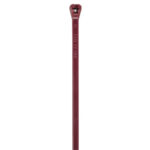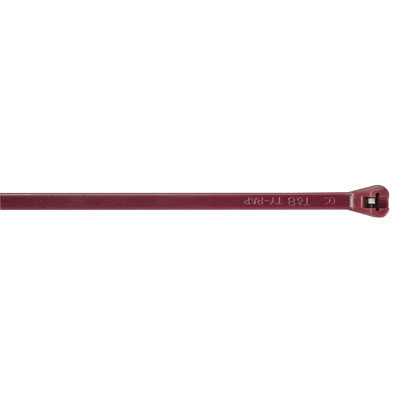Cable management in demanding environments isn't just about neatness; it's a safety game-changer. When dealing with high temperatures or sensitive installations, low smoke cable ties have rapidly become an industry favorite.
Why Low Smoke Cable Ties Matter
Low smoke cable ties offer more than just the basic bundling functions. They stand out for their minimal smoke and toxic fume emission when exposed to high heat or fire. This feature can be a lifesaver, literally, in critical installations like data centers, hospitals, or any place where people and equipment coexist in tight spaces.
The material used for these cable ties, usually a form of halogen-free thermoplastic, does not only reduce toxic emissions but also withstands extreme temperatures. The advantage here is twofold: they offer improved safety measures and are durable even in harsh environments.
Considerations for Selection
When selecting low smoke cable ties, you have to consider various factors. First, know the temperature range of your work environment. Different ties have varying thermal stability levels, and choosing the wrong one can be a costly mistake.
Moreover, consider the chemical exposure your ties might face. Low smoke ties are made to resist acids, oils, and other solvents. But like any product, they have their limitations. It’s essential to match your specific needs with the right product to maximize both safety and effectiveness.
Installation Best Practices
Low smoke cable ties require proper installation to deliver on their promise of safety and reduced emissions. When installing these ties, ensure that the bundling is tight and secure to prevent slippage.
However, too much tension can lead to breakage, negating the ties' safety features. It's a delicate balance to strike, but critical for ensuring that your low smoke ties function as intended.
Compliance and Regulations
When you opt for low smoke cable ties, you're not just making a smarter choice for safety; you're likely aligning with industry regulations. Many sectors now mandate the use of low-emission ties to meet safety and environmental guidelines.
Additionally, these ties often conform to specific flammability standards. Being aware of these standards not only keeps you compliant but also adds an extra layer of safety.
Maintenance Tips for Low Smoke Cable Ties
Regular maintenance ensures that your low smoke cable ties function at their optimal level. Conduct a routine check every quarter to assess the condition of the ties. Look for signs of wear and tear like fraying, discoloration, or any deformities.
Cleaning is often overlooked but equally crucial. Gently wipe down the ties with a damp cloth to remove any dust or particles that may have settled. This simple act not only prolongs the life of your ties but also ensures they perform efficiently, especially in sensitive environments like data centers.
Do's and Don'ts
When it comes to low smoke cable ties, the right practices can go a long way. Always use specialized cutting tools designed for cable ties to trim excess lengths. Using standard scissors or wire cutters can result in sharp edges that pose a safety hazard.
On the flip side, don't overtighten your ties. Excessive tension can weaken the ties over time, causing them to break unexpectedly. A broken tie not only fails to secure cables but could lead to mishaps in settings where reliability is paramount.
Safety Precautions
Safety is the core benefit of low smoke cable ties, but this doesn't mean you can be lax on general safety measures. Always wear gloves during installation to protect your hands from any sharp edges. Keep the area ventilated, especially when cutting or adjusting the ties.
In addition, it’s vital to dispose of damaged or old cable ties responsibly. A damaged tie is not only ineffective but could also compromise the low smoke properties for which you opted for them in the first place. Proper disposal ensures that you maintain the integrity of your setup while being environmentally responsible.
Product Review: Low Smoke Cable Ties
Industry professionals have been raving about the performance of our low smoke ties, and for a good reason. These ties have proven to be a game-changer in ensuring safety and compliance in critical environments.
Pros:
- Low Smoke Emission: As the name suggests, these ties live up to their promise of minimal smoke and toxic fumes during high-temperature exposure. This feature is invaluable, especially in settings where safety is paramount.
- Durability: Made from halogen-free thermoplastic, these ties are built to withstand extreme temperatures and resist chemicals. Their robust construction ensures they won't fail even in harsh conditions.
- Compliance: Using these cable ties often aligns with industry regulations and safety guidelines. They also conform to specific flammability standards, giving you peace of mind when it comes to compliance.
Cons:
- Price: The enhanced safety features and durability of low smoke cable ties come at a slightly higher price point compared to standard ties. However, most industry professionals agree that the added safety justifies the cost.
- Installation Sensitivity: Achieving the right tension during installation can be a bit tricky. While overtightening can lead to breakage, not applying enough tension may result in ineffective cable management.
Frequently Asked Questions (FAQs)
Yes, low smoke cable ties can be used outdoors. They are designed to withstand a wide range of environmental conditions, including exposure to UV radiation and temperature fluctuations.
While it's possible to reuse them in some cases, it's generally recommended to use new ties for critical applications. Reusing ties can compromise their integrity and safety features.
Yes, low smoke cable ties are available in various lengths and widths to accommodate different cable management needs. Be sure to select the size that best suits your specific requirements.
Dispose of old or damaged ties responsibly by recycling them. Many recycling centers accept plastic cable ties, but be sure to check with your local recycling guidelines.
Wrapping Up
Low smoke cable ties bring an added layer of safety and compliance to complex cable management needs. With their durability and reduced emission features, these ties are a must-have in any high-stakes, regulated environment.
Explore our latest blog post for more insights into the ever-evolving world of cable tools: Horizontal Wire Manager: The Best of Cable Infrastructure


